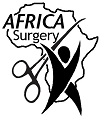DAKAR, Senegal — After a nerve-racking countdown, Sierra Leone celebrated a national milestone on Saturday that government officials hoped would help the country finally leave behind a grim chapter in its history: It was officially declared free of Ebola transmissions.
The World Health Organization made the announcement at an official ceremony in Freetown, the capital, after the nation had passed 42 days, or two incubation periods for the virus, without an Ebola case.
The news marks a joyous but tense moment in Sierra Leone, where Ebola has crippled the nation’s economy and officials worry the virus could re-emerge at any moment. Saturday’s ceremony was broadcast on radio and television stations across the country and included an emotional story from an Ebola response worker who survived being infected with the virus.
A World Health Organization worker checked the temperature of one of Seydouba Soumah’s sons in the village of Tana, GuineaThe Last Place on Earth With Ebola: Getting Guinea to ZeroNOV. 6, 2015
“It’s kind of like a mixed emotion,” said Tunis Yahya, director of communications for the country’s National Ebola Response Center, speaking by phone from the official ceremony, attended by President Ernest Bai Koroma. “People are happy, but also many are depressed because they lost their families.”
People were released from an Ebola quarantine in the village of Massessehbeh on the outskirts of Freetown, Sierra Leone, in August. Credit Sunday Alamba/Associated Press
The swirl of emotions was evident on the streets of Freetown, where people started gathering at midnight in anticipation of the announcement, dancing in celebration. But there was also quiet reflection. Names of the dead were read aloud, and people gathered under a giant cotton tree for a vigil for health workers who died.
In Sierra Leone, the hardest hit of any nation during the Ebola outbreak, nearly 4,000 people died from the disease; altogether 14,000 were infected. The outbreak has so far killed more than 11,300 people across the world.
Sierra Leone will now begin a 90-day period of enhanced surveillance that will run until Feb. 5, with the aim of quickly detecting any new possible cases.
Liberia was declared free of the virus about two months ago. But the outbreak is still smoldering in the country where it originated: Guinea, where domestic and international health workers have flocked to a cluster of small villages as seven new victims have emerged in recent weeks. Sierra Leone is on high alert to prevent the outbreak from spreading over the border; Guinea’s new cases are just 20 miles from the boundary separating the countries.
But for Sierra Leone, Saturday was a time to relish the chance to get back to normal.
Celebrations were planned across the nation, with speeches from political and religious figures, singing, dancing, an ambulance exposition from the Red Cross and balloon releases.
The consequences of the outbreak in Sierra Leone, which began in May 2014, have been far-reaching. As was the case in Liberia and Guinea, the nation’s economy has been knocked off kilter after companies pulled out and tourism and commerce ground to a halt when the virus started spreading.
Continue reading the main story
Times Coverage of Ebola: Pulitzer-Winning Articles and More
The Times produced more than 400 articles, including about 50 front-page stories from inside the Ebola-afflicted countries themselves. Here is a sample of work.
A recent report from Amnesty International blamed the outbreak for a rise in teenage pregnancies, saying the focus on fighting the disease had diverted attention from sex education and had also allowed sexual violence and abuse to thrive.
“Sierra Leone can now focus on rebuilding its economy and harnessing our community spirit and national ambition to bring back foreign investors, strengthen the private sector, diversify its economic activity and bring growth and prosperity to the people of this country,” said John Sisay, chief executive of the mining company Sierra Rutile, the largest in the country, in a statement.
The celebratory mood on Saturday was a far cry from the situation here almost exactly a year ago, when the number of cases in Sierra Leone was at its highest level.
By the time Ebola reached the nation, the virus had already been spreading near the border with Guinea and Liberia. Experts from the Guinean health ministry, the W.H.O. and Doctors Without Borders had flagged early, probable Ebola cases in Sierra Leone, but they were not all followed up on, and the responders lost precious weeks.
Back then, Sierra Leone had few treatment units. Those suspected of having Ebola were transported for up to 10 hours in the heat, sometimes dying on the way. The Kenema hospital was so overwhelmed that many of its doctors and nurses contracted Ebola and died, and responders from the United States and other countries also fell sick there.
The disease hopscotched across the country, with health workers scrambling to react. More than six months after the epidemic was identified, patients in one district, Kono, died in an overrun holding center strewn with contaminated waste. Many of those exposed to Ebola were not tracked.
“It was a different world,” said Dr. Thomas R. Frieden, director of the Centers for Disease Control and Prevention in Atlanta, which sent 986 workers to Sierra Leone, more than were sent to Guinea or Liberia. Those workers ran a testing laboratory, supported an Ebola vaccine trial and helped build an emergency operations center.
They also offered advice, including opposing Sierra Leone’s policy of quarantining people who had come into contact with Ebola patients, often without support for those people’s basic needs in the beginning. The quarantines increased mistrust and may have extended the outbreak, Dr. Frieden said. He said the priority now was to help strengthen health care and disease surveillance.
